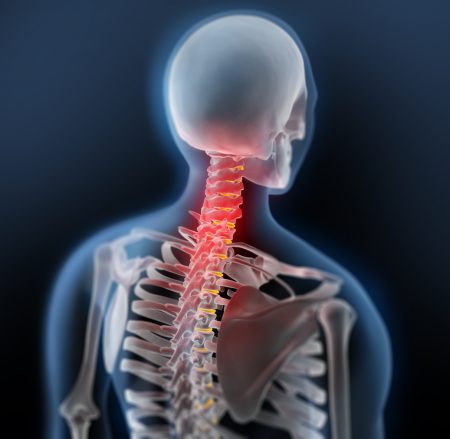CERVICAL ARTHROPLASTY (ARTIFICIAL DISC REPLACEMENT)
A possible alternative to a cervical fusion surgery.

Goals of Cervical Arthroplasty
- Relieve Nerve Compression – When a disc herniates or begins to degenerate and collapse, there is less room for the nerve roots (and sometimes the spinal cord) to function, which can be a source of chronic pain, tingling, numbness, and/or weakness radiating from the neck into the arm. Clearing away the damaged disc and inserting an artificial disc aims to relieve pressure on any compressed nerves to give them space to heal and function normally.
- If the spinal cord was previously compressed, relieving pressure on it may help resolve or prevent progression of other symptoms, such as trouble with coordination, walking, and/or bladder or bowel control.
- Maintain Motion at the Repaired Spinal Level – Replacing the damaged disc with an artificial disc, natural biomechanics can be more closely retained throughout the cervical spine when the neck moves. While an artificial disc can help maintain motion, it does not create or improve motion.
Potential Benefits of Choosing an Artificial Disc
- Maintaining more natural neck motion
- Reducing the risk for adjacent segments of the cervical spine to develop degenerative disc disease
- Eliminating potential complications and issues associated with the need for bone graft and spinal instrumentation for spinal fusion
- Allowing quicker return to neck movement after surgery

Artificial Cervical Disc Replacement
Artificial Cervical Disc Replacement (Prestige®)
Contraindications for Cervical Arthroplasty
Cervical artificial disc replacement is not recommended for patients with any of the following:
- Advanced Spinal Degeneration – Replacing a damaged disc cannot help improve problems associated with an ossified posterior longitudinal ligament or degenerating facet joints. Also, while artificial cervical discs have been approved for use at 2 adjacent spinal levels by the FDA in some cases, they have not been approved for use in 3 adjacent spinal levels.
- Weakened Bones – If the bones are weak, such as from osteoporosis or a bone infection, the artificial disc is less likely to stay in place after the surgery.
- Prior Cervical Spine Surgery – An underlying instability from a previous neck surgery may reduce the chances for cervical arthroplasty to be successful.
- Allergy to Artificial Disc Material – If the patient has a known allergy to any of the metals or plastics in the artificial disc, either a different disc must be selected or the procedure avoided.
schedule an appointment
- Contact Us
Ready to learn more? Contact us today to get started.
Make an Appointment
New & Existing Patients: Request An Appointment
New and existing patients may request an appointment by filling out the form below. Someone from our team will be contacting you to schedule an appointment time.
